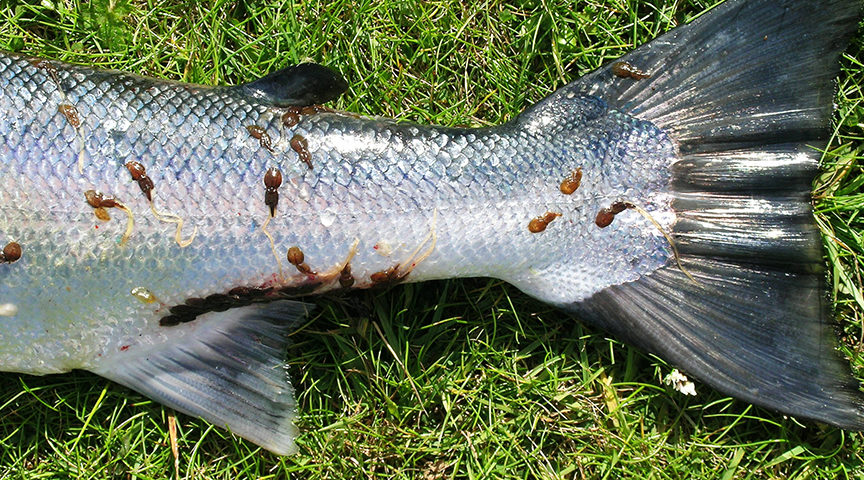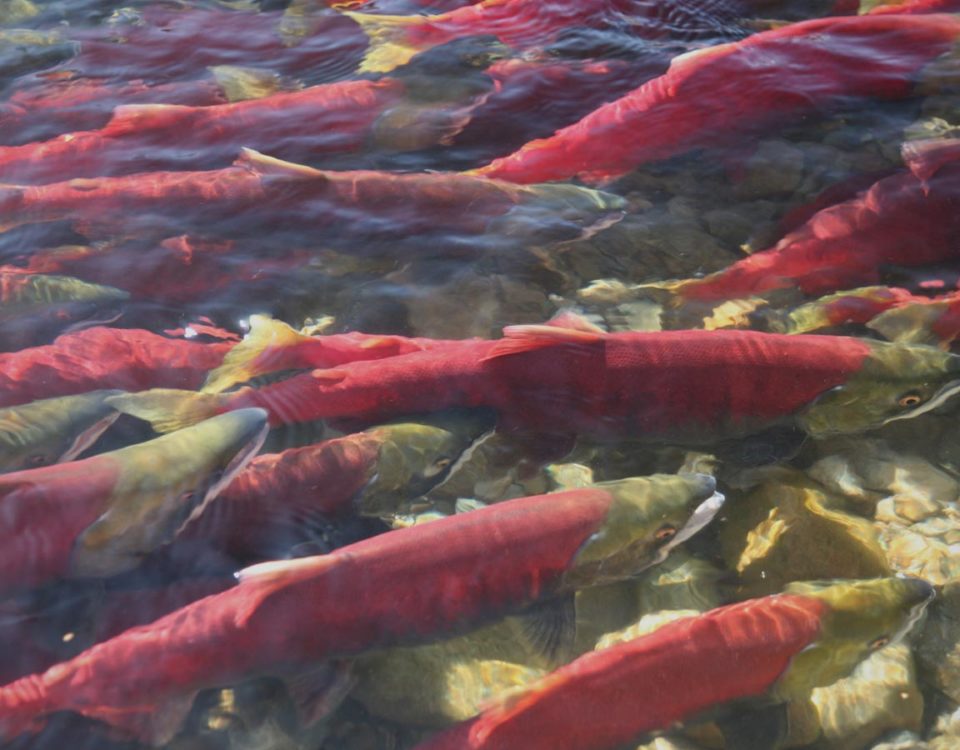Sea lice mitigation techniques

PROJECT
Could salmon lice become more freshwater tolerant?
Background
Sea lice (Lepeophtheirus salmonis) are ectoparasites of salmon and trout. Heavy infestations can lead to secondary infections, weaker condition and mortality, particularly in young fish. In the wild, infested coastal trout and juvenile salmon can migrate into freshwater to manage infestations. Sea lice do not tolerate freshwater well, particularly after extended exposures and this behavioral adaptation allows trout to ‘delouse’. In areas with co-occurring salmon aquaculture and wild salmonid populations, sea louse infestations can be more severe on wild fish and this ‘delousing’ behavior may be more important. Salmon farmers have historically managed sea lice infestations using a number of methods including treatment of farmed fish with chemicals that kill the sea lice. Overuse of several chemicals has caused sea lice to evolve resistance to chemical treatments and many salmon farmers are using alternative methods for control. For example, in Norway, some salmon farmers use freshwater exposures to control sea lice. While this method is more environmentally friendly, there are developing concerns that overuse could cause sea lice to evolve tolerance of freshwater. This would be both detrimental for wild fish, which rely on freshwater to control infestations and for salmon farmers, whom already have limited options for effectively controlling sea lice.
Methods
As a first step towards understanding this issue, we conducted a literature review to quantify what is known about how sea lice and their relatives respond physiologically to freshwater. We have identified knowledge gaps that need to be investigated, in order to understand if sea lice can evolve freshwater tolerance.
What we have learned
In our literature review, we learned that numerous parasitic crustaceans have adapted to freshwater, however there are substantial genetic and physiological barriers that may impede this process and it is unclear if the freshwater treatments used on salmon farms place a strong enough evolutionary pressure on sea lice for them to evolve freshwater tolerance. Knowledge gaps that we have identified include: quantifying heritable genetic variation in freshwater tolerance in sea lice, characterizing the mechanisms for freshwater tolerance in the planktonic stages of sea lice and the impact of different salmon farm management strategies on sea lice population genetics and evolutionary trajectories. We are now in the process of writing up a risk assessment strategy for freshwater tolerance and sea lice.
For further information see: Evaluating the potential for sea lice to evolve freshwater tolerance as a consequence of freshwater treatments in salmon aquaculture
PRINCIPAL INVESTIGATOR
Maya GronerResearch Ecologist mgroner@pwssc.org




